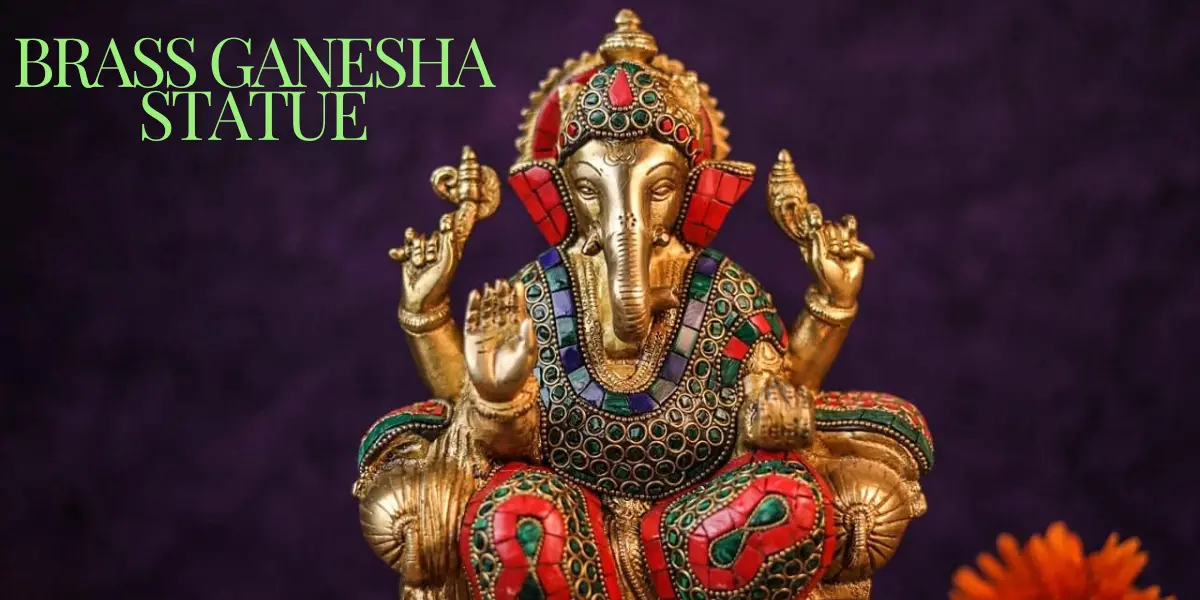Brass Ganesha Statue: Art and Symbolism

In the realm of art and culture, few symbols hold as much significance and reverence as the Brass Ganesha Statue. Lord Ganesha, the elephant-headed deity, is a prominent figure in Hinduism, embodying wisdom, prosperity, and the remover of obstacles. This article delves into the rich history, intricate craftsmanship, and profound symbolism of Brass Ganesha Statues, making it an essential read for art enthusiasts, collectors, and spiritual seekers.
The Historical Significance of Ganesha in Hinduism
Ganesha, also known as Ganapati, is one of the most venerated deities in the Hindu pantheon. He is worshipped across India and globally by millions of devotees. The origins of Ganesha worship can be traced back to ancient Indian texts and scriptures. Over the centuries, Ganesha has been depicted in various forms and materials, but the brass statue holds a unique place due to its durability and aesthetic appeal.
Ancient Texts and Scriptures
The Rigveda, one of the oldest known sacred texts, mentions Ganesha as a divine entity. Subsequent texts like the Upanishads and Puranas elaborate on his birth, adventures, and the significance of his physical attributes. Each aspect of Ganesha’s form, from his large elephant head to his pot-bellied body, is laden with symbolic meaning.
Craftsmanship and Techniques in Brass Ganesha Statues
Creating a Brass Ganesha Statue is an intricate process that requires exceptional skill and artistry. The traditional methods used in crafting these statues have been passed down through generations of artisans.
The Lost-Wax Casting Method
One of the most revered techniques in making brass statues is the lost-wax casting method. This ancient process involves creating a wax model of the statue, which is then covered in clay and heated to melt away the wax, leaving a mold. Molten brass is poured into this mold to form the statue. This method allows for intricate detailing and a high degree of artistic expression.
Detailed Embellishments and Finishing
Artisans pay meticulous attention to details, from the intricate carvings on Ganesha’s crown and jewelry to the delicate patterns on his attire. Each Brass Ganesha Statue is not just a piece of art but a labor of love, reflecting the devotion and skill of the craftsman.
Symbolism and Spiritual Significance
Every aspect of a Brass Ganesha Statue holds deep symbolic meaning. Understanding these symbols can enhance one’s appreciation of the statue and its significance in Hindu worship.
The Elephant Head
Ganesha’s elephant head symbolizes wisdom, understanding, and a discriminating intellect that one must possess to attain perfection in life. The large ears signify a patient listener, a vital trait for understanding the unspoken words of the universe.
The Trunk
The versatile trunk of Ganesha, capable of performing both gross and subtle tasks, represents adaptability and efficiency. It teaches us the importance of being versatile in facing life’s challenges.
The Large Belly
The large belly of Ganesha signifies the capacity to peacefully digest all good and bad in life. It symbolizes generosity and total acceptance.
The Four Arms
Each of Ganesha’s four arms carries a different item, each with its unique meaning:
- The Ankusa (goad): Represents the tool to remove obstacles or guide souls to the path of righteousness.
- The Pasha (noose): Symbolizes control over worldly attachments and desires.
- The Modak (sweet): Signifies the rewards of a disciplined life and the ultimate attainment of self-realization.
- The Abhaya Mudra (gesture of fearlessness): Provides protection and reassurance to devotees, symbolizing Ganesha’s role as a protector.
Placing a Brass Ganesha Statue at Home
The presence of a Brass Ganesha Statue in a home or workspace is believed to bring positive energy, and prosperity, and remove obstacles. Here are some tips on how to place the statue to maximize its benefits:
Entrance Placement
Placing the statue near the entrance of your home is considered highly auspicious. It is believed that Ganesha will ward off evil and negative energies, ensuring a peaceful and prosperous household.
Living Room Placement
A Brass Ganesha Statue in the living room can enhance the aesthetics of your space while also infusing it with spiritual energy. It serves as a constant reminder of the virtues Ganesha embodies.
Workspace Placement
For those seeking success in their professional endeavors, placing a Ganesha statue in the workspace can be beneficial. It is believed to inspire creativity, remove professional obstacles, and bring success.
Caring for Your Brass Ganesha Statue
To maintain the beauty and integrity of your Brass Ganesha Statue, regular care and maintenance are essential.
Cleaning and Polishing
Brass statues can tarnish over time due to exposure to air and moisture. Regular cleaning with a soft cloth and mild cleaning agents can help preserve its shine. Avoid using harsh chemicals as they can damage the surface.
Protecting from Elements
Keep your statue away from direct sunlight and moisture to prevent corrosion. If placed outdoors, consider using protective coatings or placing it under a covered area.
Conclusion
A Brass Ganesha Statue is not just a piece of decor; it is a profound symbol of spirituality, artistry, and cultural heritage. Whether you are an art collector, a spiritual seeker, or someone who appreciates fine craftsmanship, a Brass Ganesha Statue can be a treasured addition to your collection.



Leave a Comment